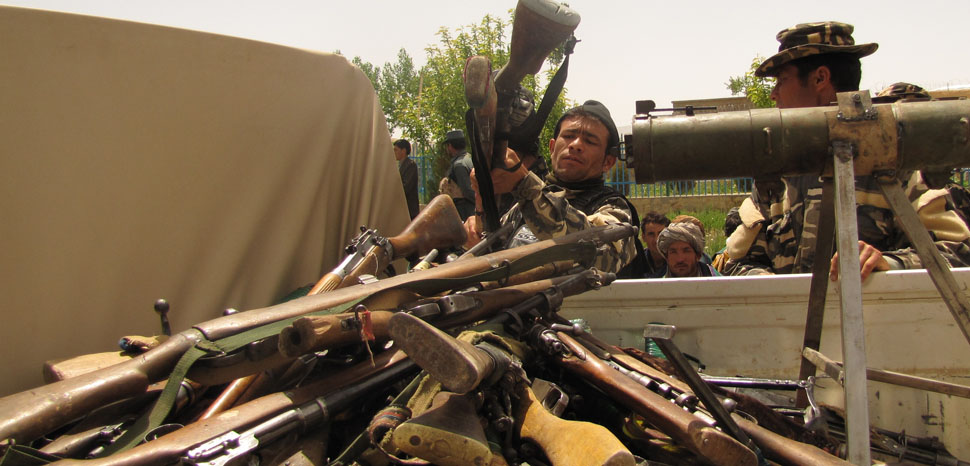The Trump administration has fallen prey to the pitfalls of ending long wars. In the American experience, exit strategies begin as conditions-based plans but quickly become irresistible departure schedules. To hasten withdrawal from war-torn Afghanistan, the United States has signed an unenforceable agreement with the Taliban and left our Afghan allies holding the bag. As Washington insiders debate how to accelerate withdrawal, the Taliban has upped the ante on the battlefield and offered no concessions.
In 2017, the new Trump administration South Asia strategy featured a troop increase in Afghanistan and a harder line toward Pakistan. Approximately 14,000 U.S. troops, backed by more than 3,000 from coalition nations, provided advice, training and air support, stiffening the spine of 270,000 Afghan police and military personnel. These forces have been hard-pressed to hold off 60,000 Taliban insurgents, backed by Pakistan, drug money, Iran and Russia. Since 2014, more than 45,000 Afghan soldiers and police personnel have perished in the fight.
Discouraged by the lack of progress and the Taliban’s refusal to negotiate with Kabul while U.S. troops were in the country, the United States began to negotiate directly with the Taliban without the direct participation of the Kabul government. In February 2020, Ambassador Zalmay Khalilzad signed the agreement with the Taliban to withdraw U.S. forces in 14 months (by May 2021) and support a prisoner exchange. The Taliban promised negotiations with Kabul, a ceasefire, and to turn its back on al Qaeda, their old friends. The Taliban agreed not to attack U.S. forces. The government in Kabul was not a party to the agreement, but it recognized the withdrawal and received a promise of continued U.S. support.
The Taliban are continuing to fight Afghan forces, who are responding with the help of coalition air power. No ceasefire is in sight. Despite spirited fighting, the Trump administration apparently has agreed to reduce U.S. force levels to 2,500 — roughly half of what’s there now — by the end of President Trump’s current term of office. Trump’s former national security adviser, retired Lt. Gen. H.R. McMaster, characterized the overall agreement as a “travesty” and a Munich-like appeasement. The agreement is so weak that the Taliban recently complained about “excessive” U.S. airstrikes designed to block a major Taliban attack on the capital of Helmand Province.
The next administration — red or blue — needs a rapid reassessment of where it is in Afghanistan. The United States has entered into an agreement that exchanged reductions in our troop presence — our strongest lever — for hollow promises from a group that is pursuing military victory, not a ceasefire and good faith negotiations. The Doha peace talks between the Kabul government and the Taliban have become a sham. As the U.S. presidential campaign winds down, senior officials in the United States continue to ignore the worsening conditions on the battlefield.
The next administration needs first to consider its goals. Neither a troop withdrawal nor a quick negotiated settlement are goals per se. The main U.S. goal is to prevent or block terrorist safe-havens and further regional stability in an area with multiple nuclear powers. To do this, we need a decent government in Kabul. We have to continue to support that government, give aid to its police and military forces, and prevent its overthrow by any means necessary. Kabul must be pressed to reduce corruption, and the Taliban threatened to cease attacks — or else. Russia, Pakistan and Iran must be pushed into supporting peace and stability. Muscle and diplomacy, applied in equal measure, should be the key instruments. Stopping U.S. and coalition troop withdrawals should be the first signal that the United States won’t be played for a fool.
Other subsidiary objectives of a new policy include fostering respect for human rights, and in particular women’s rights, which have made slow but significant progress under former Afghan President Karzai and President Ghani. The Taliban had a heinous persecution of women and that policy has continued during the war. A female judge, hiding from Taliban threats in 2019, said: “A Talib is a Talib. … They have proven what type of people they are, what their ideology is. And if they return with the same ideology, everything will be the same again.”
A related subsidiary objective should be to maintain progress in Afghan public health, education and telecommunications. In the two decades since the departure of the Taliban, Afghan society has begun to modernize rapidly. A Taliban-only regime could retard or snuff out that progress. The West has to support this pillar of stability, using the financial heft of international organizations, such as the World Bank, to help carry the load.
Critics of slowing the withdrawal will say that the recommendations here are just more nation building and an effort to prolong an endless war that has cost a trillion dollars and nearly 2,500 U.S. lives. Nothing could be farther from the truth. A precipitous U.S. withdrawal will accelerate the war, and could push Afghanistan into a multi-party civil war, creating another Syria, a major bonus for the terrorist groups that are already in the Hindu Kush. As for nation building, it is happening and Afghan hands are doing the building. A Taliban victory risks a greater war, socioeconomic damage, and even more bloodshed.
Afghanistan once again stands at a crossroads. The next U.S. president will decide whether to increase support for Kabul, or withdraw all of our troops and leave Afghan forces to fight on alone against the Taliban and its ugly foreign backers, all of whom would delight in our failure there. A precipitous exit from Afghanistan is not in America’s interests.
Joseph J. Collins is a retired Army colonel and Department of Defense civilian. From 2001-04, he was Deputy Assistant Secretary of Defense for Stability Operations. For over 25 years, he taught strategy and international relations at West Point, the National War College, and Georgetown’s Security Studies Program.













